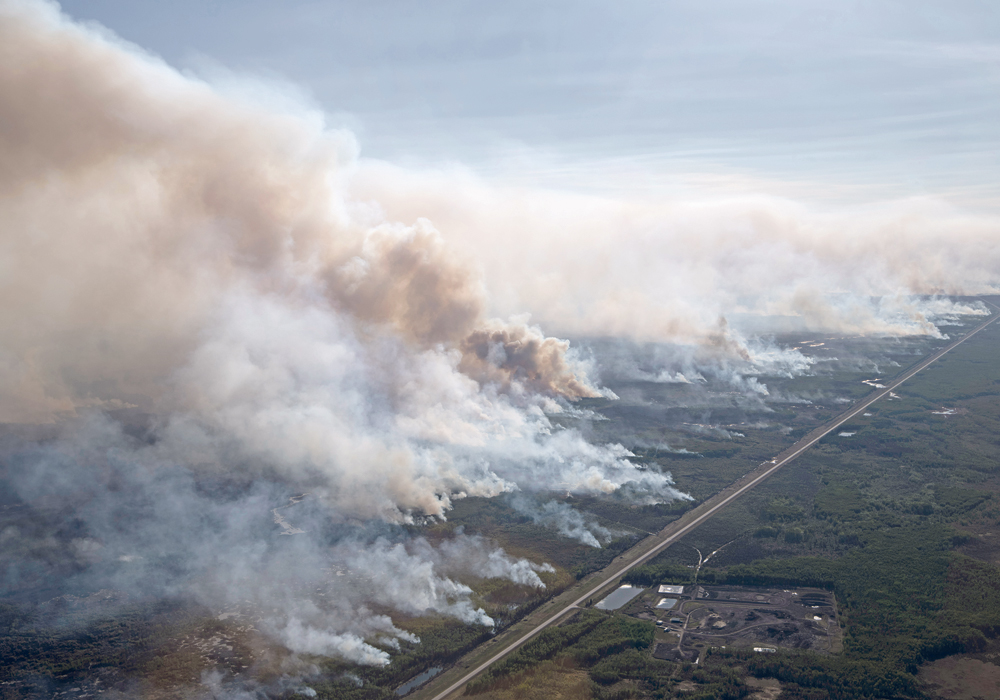When a fire is burning out of control, the usual priorities are to fight, control and extinguish it. Research is not top of mind.
But there is a place in Alberta where fire research is paramount: the Pelican Mountain FireSmart Vegetation Management Research Site in northern Alberta near Sandy Lake.
David Schroeder, the prescribed fire program co-ordinator with Alberta Agriculture and Forestry, said that site and other studies represent a new era of research underway to better predict fire behaviour and manage fuel to mitigate its damage. It includes tests at the research site as well as prescribed burns to protect communities.
Read Also

Canadian Food Inspection Agency red tape changes a first step: agriculture
Farm groups say they’re happy to see action on Canada’s federal regulatory red tape, but there’s still a lot of streamlining left to be done
“Our prescribed fire program in Alberta within the forest protection area, it is very much focused on burning grass,” Schroeder said during a public presentation at the University of Lethbridge.
“So we’ll burn within communities, working with fire departments or working a lot with First Nations reserves. A lot of that is focused on annually burning the grass.”
Schroeder said the urgency of fighting fire in combination with the different agencies often involved in that fight can result in valuable information and data being lost or not shared with agencies that could use it to better predict and analyze fire.
By doing test burns in areas where trees have been thinned or mulched to different degrees and in different patterns, and by watching fire behaviour in different types and sizes of species, undergrowth, moss and surface compaction, researchers are learning how to best prevent or mitigate fire damage.
“Burn, learn and then return,” is the motto, said Schroeder.
Weather, topography and fuel — the WTF acronym that is easy to remember — determine how a fire will burn but fuel is the only thing in that trio that people can potentially manage.
Fuel load is influenced by topography, climate, disease, previous wildfire, human activity and even insects, Schroeder said.
Many of the 2017 fires in British Columbia occurred in areas affected by pine beetle, an insect now making inroads in Alberta. Harvesting insect-infested trees can be beneficial but it is usually done with profit rather than fuel load reduction in mind.
The Alberta government last week announced it will dedicate $30 million annually for the next four years toward pine beetle management, up from $25 million annually in the previous budget. The Saskatchewan government also funds pine beetle control efforts. Alberta’s pine forest considered susceptible to the beetle has an estimated value of more than $11 billion, according to government forestry data.
Fuel management is particularly important in boreal spruce growths, the most volatile type among the 16 fuel types identified in Canada for the purposes of fire behaviour prediction, said Schroeder.
The prediction system, used across Canada, is useful but now that there are more wildland fires affecting urban areas, the fuel types are different and predictions are likely less accurate.
The objectives of fuel management include limiting the occurrences and spread of fire and limiting fire intensity. Schroeder said that involves removal of fuel, isolating stands of trees from others and post-fire conversion of foliage to less flammable types. For example, planting aspen or tamarack instead of spruce.
Prescribed burning has been around for thousands of years, having been employed by First Nations people and used as a tool for various purposes ever since. Schroeder said the United States burns about 10 million acres a year in managed events, while Australia burns up to 50 million acres.
However, “we don’t have a lot of data on this. It’s a somewhat new concept for us. For our purposes now, in this industrial forest, wildland landscapes, we don’t really have a lot of standards or decision tools.”
That’s where research comes in.
“We have to develop new ways to obtain data and that’s more than just fuel management needs. We’ve got to know where there are insect attacks happening, where there are pathogens affecting tree health.”
Hilary Cameron, co-ordinator for the Alberta Wildland Fuel Program, is engaged in that research. Her team’s goal is to travel the province, measure anything and everything that could burn and describe the fuel load and location.
That data could then be provided to communities for fire prevention and fire-fighting plans.
She is experimenting with Light Detection and Ranging (LIDAR) laser technology to better manage the huge task and is working with U of L researchers Chris Hopkinson and Laura Chasmer on best techniques.
















